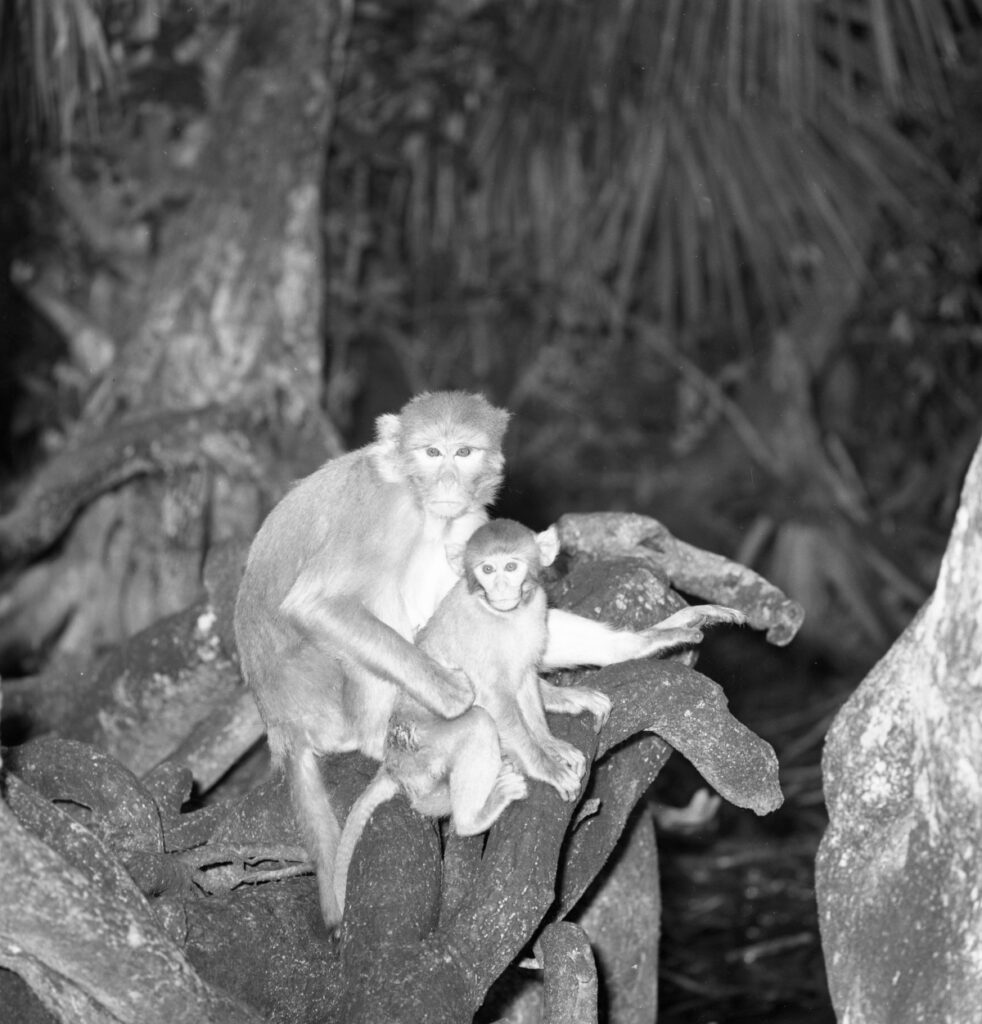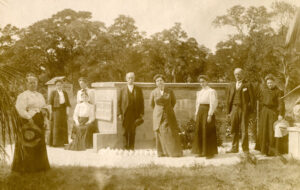
Silver Springs is well known as the site of the classic film Creature from the Black Lagoon. One of the first tourist attractions in the state, the park drew visitors from all over the country to observe its beautiful springs and native vegetation.
A trip down the Silver River in a canoe, paddleboard, or kayak will afford a close up and personal view of manatees, herons, and over 30 different species of fish.
However, the most popular draw on the river is the rhesus monkeys which live along the river’s bank. At least 300 monkeys call Silver Springs State Park home.

Native to southeast Asia, the rhesus monkeys were brought to this area in 1938 when Colonel Tooey released six monkeys onto a small island within the park. Tooey was a tour boat operator who hoped to create a Tarzan themed attraction on the island to help his business.
Unfortunately, Tooey did not know that these monkeys are strong swimmers. As soon as they arrived on the island, the monkeys began escaping by swimming to the nearby woods. Not to be discouraged by the disappearance of the monkeys from the island, Tooey brought in six more monkeys to replace those that had escaped.

By the 1980’s the monkey population was over one hundred and counting. From 1984 to 2012, Florida wildlife officials got permission to remove more than 1,000 monkeys in order to slow the population growth and prevent encounters with campers. Twenty female monkeys were sterilized during this time.
According to an article in National Geographic, in spite of these efforts, the population continues to grow with increasing rapidity. Jane Anderson, a wildlife ecologist at Texas A and M University, stated that the population is growing at 11 percent per year.
Efforts to reduce the population by removal of the males or by sterilization has met with opposition from locals and animal rights groups.
In 2012 all efforts to reduce the population were halted when the public learned that the monkeys were being taken from the park and sold to biomedical research organizations.
The monkeys continue to populate, and at the current rate of growth, experts predict that the present population of 300 will double by 2022.
Although it is fun to look at the monkeys as you paddle down the river, they have started to become a problem for campers and residents of Ocala. The park was forced to partially close in 2016 when several monkeys charged a family on one of the park’s boardwalks. The monkeys don’t seem to fear humans and have been known to cause mischief outside the park.
In addition, they have traveled over 100 miles from their home colony and can now be found as far south as Sarasota and Tampa.
Like the Burmese python and the iguana, the monkeys can become a threat to the environments as they destroy mangroves, pollute the waters, and kill native birds.
So far, there are no plans to remove the monkeys or reduce the population in Silver Springs State Park.



